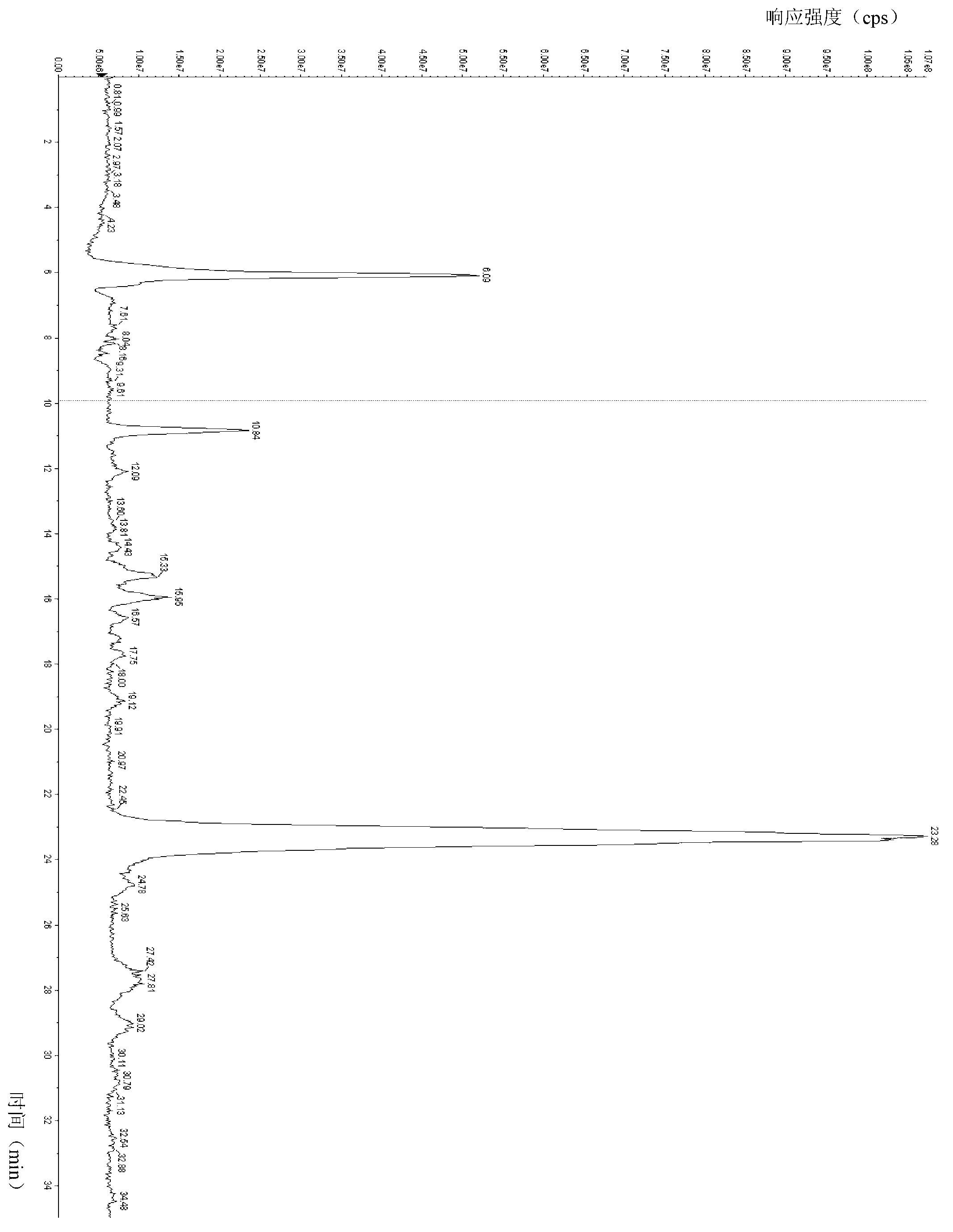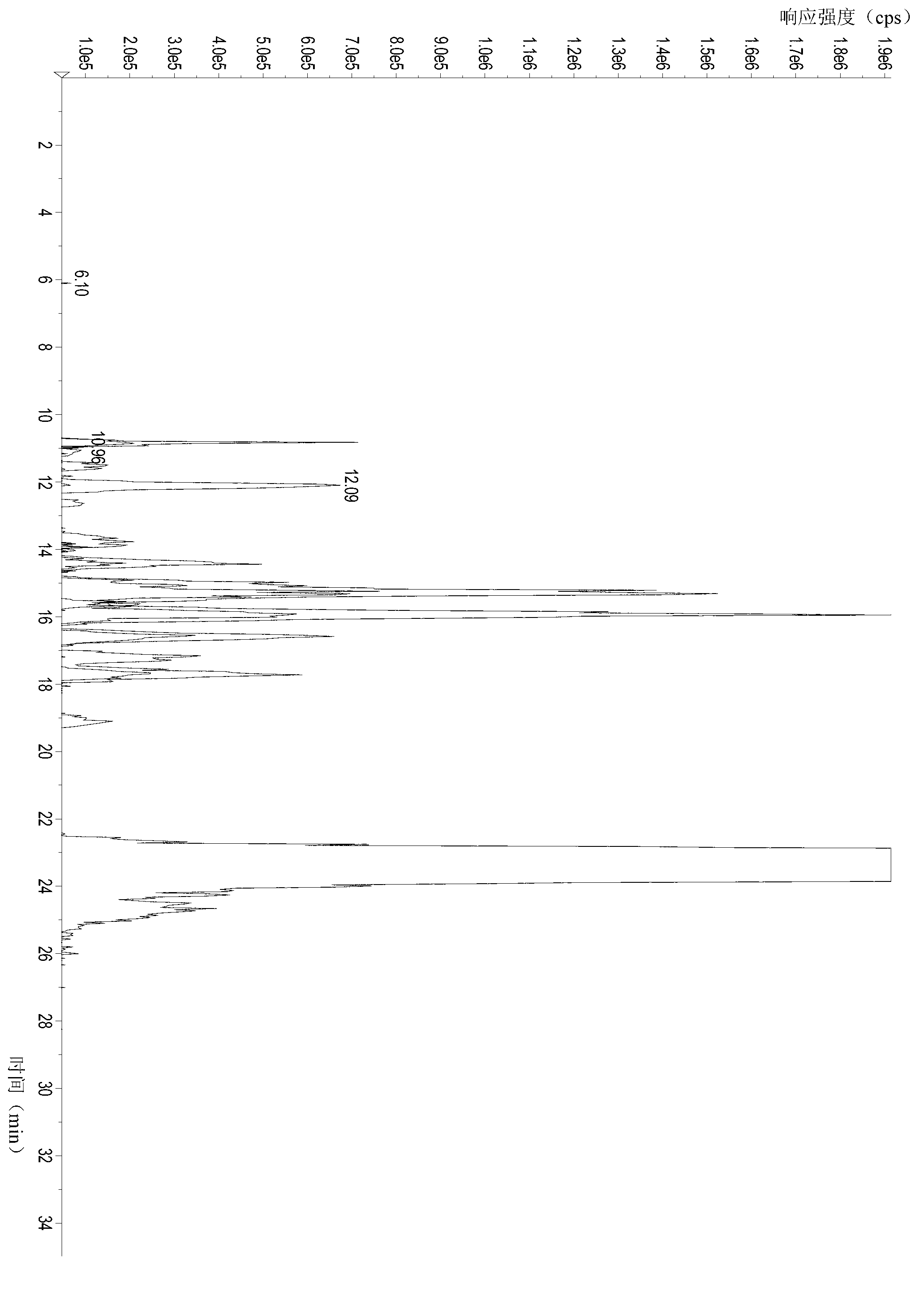High-performance liquid chromatography-tandem mass spectrometry method used for qualitatively and quantitatively determining plant active polysaccharide
A high-performance liquid chromatography and active polysaccharide technology, applied in the field of qualitative and quantitative analysis, can solve the problems of reduced chromatographic detection sensitivity, low analysis results, complex reactions, etc., and achieve the effects of improving sensitivity, good separation effect and strong selectivity.
- Summary
- Abstract
- Description
- Claims
- Application Information
AI Technical Summary
Problems solved by technology
Method used
Image
Examples
Embodiment 1
[0047] (1) The polysaccharide sample to be tested is a mixed plant extract: extracted from tremella, shiitake mushroom, chrysanthemum, mulberry, medlar, Poria cocos, Flammulina velutipes and other natural hot plants through water extraction.
[0048] (2) Derivatization treatment of standard substance: the standard substance is Dextran Standard DXT1K Mw1200 (referred to as mixed polysaccharide reference substance, American Polymer Standards Company) and glucose standard substance, the former is used for qualitative and the latter is used for quantitative. Take 200 μL of 0.01mol / L standard product solution in a 15ml EP tube, add 200 μL of AEC-containing methanol solution (the final concentration of AEC is 0.04mol / L), 200 μL of 0.2mol / L sodium cyanoborohydride solution and 60 μL glacial acetic acid, shake well, heat in 70°C water bath for 1 hour, take out and cool to room temperature, add 500 μL of ultrapure water, shake well, add 1.5 mL of chloroform, shake well, and centrifuge a...
Embodiment 2
[0059] (1) The polysaccharide sample to be tested is Borojo powder: Borojo is peeled and pitted, then ground with water, enzymatically hydrolyzed by pectinase, filtered to remove impurities, concentrated in vacuum at low temperature, adjusted to pH, and spray-dried. become.
[0060] (2) Derivatization treatment of standard substance: same as step (2) of Example 1.
[0061] (3) Sample derivatization treatment: Weigh 10mg of sample into a 15mL EP tube, add 1ml of ultrapure water into the EP tube, shake well, take 200μL of the sample solution into a 15ml EP tube after the dissolution is complete, and the rest of the steps are the same as in the example 1 step (3).
[0062] (4) Qualitative determination: same as step (4) of Example 1.
[0063] The result obtained is as Figure 6 , 7 As shown in and 8, the qualification is carried out by the retention time and the characteristic peaks of the fragment ions of each component.
[0064] (5) Quantitative determination: the determin...
Embodiment 3
[0069] (1) The polysaccharide sample to be tested is pine needle extract: it is obtained by crushing pine needles and extracting them with water.
[0070] (2) Derivatization treatment of standard substance: same as step (2) of Example 1.
[0071] (3) Sample derivatization treatment: same as step (3) of Example 1.
[0072] (4) Qualitative determination: same as step (4) of Example 1.
[0073] The result obtained is as Figures 11 to 13 Qualitative analysis was carried out by retention time and characteristic peaks of fragment ions of each component.
[0074] (5) Quantitative determination: the determination conditions are the same as step (5) of Example 1.
[0075] Make a standard curve: take the peak area of the standard glucose solution derivatized by AEC as the abscissa, and the concentration of the standard series as the ordinate, and perform linear regression to obtain the standard curve equation:
[0076] y=2.5e+006x+1.94e+006R=0.9996.
[0077] (6) Result analysis:...
PUM
 Login to View More
Login to View More Abstract
Description
Claims
Application Information
 Login to View More
Login to View More - R&D
- Intellectual Property
- Life Sciences
- Materials
- Tech Scout
- Unparalleled Data Quality
- Higher Quality Content
- 60% Fewer Hallucinations
Browse by: Latest US Patents, China's latest patents, Technical Efficacy Thesaurus, Application Domain, Technology Topic, Popular Technical Reports.
© 2025 PatSnap. All rights reserved.Legal|Privacy policy|Modern Slavery Act Transparency Statement|Sitemap|About US| Contact US: help@patsnap.com



